Written By: Laura Cooley and Sergio Ruiz Cordova, AUWRC
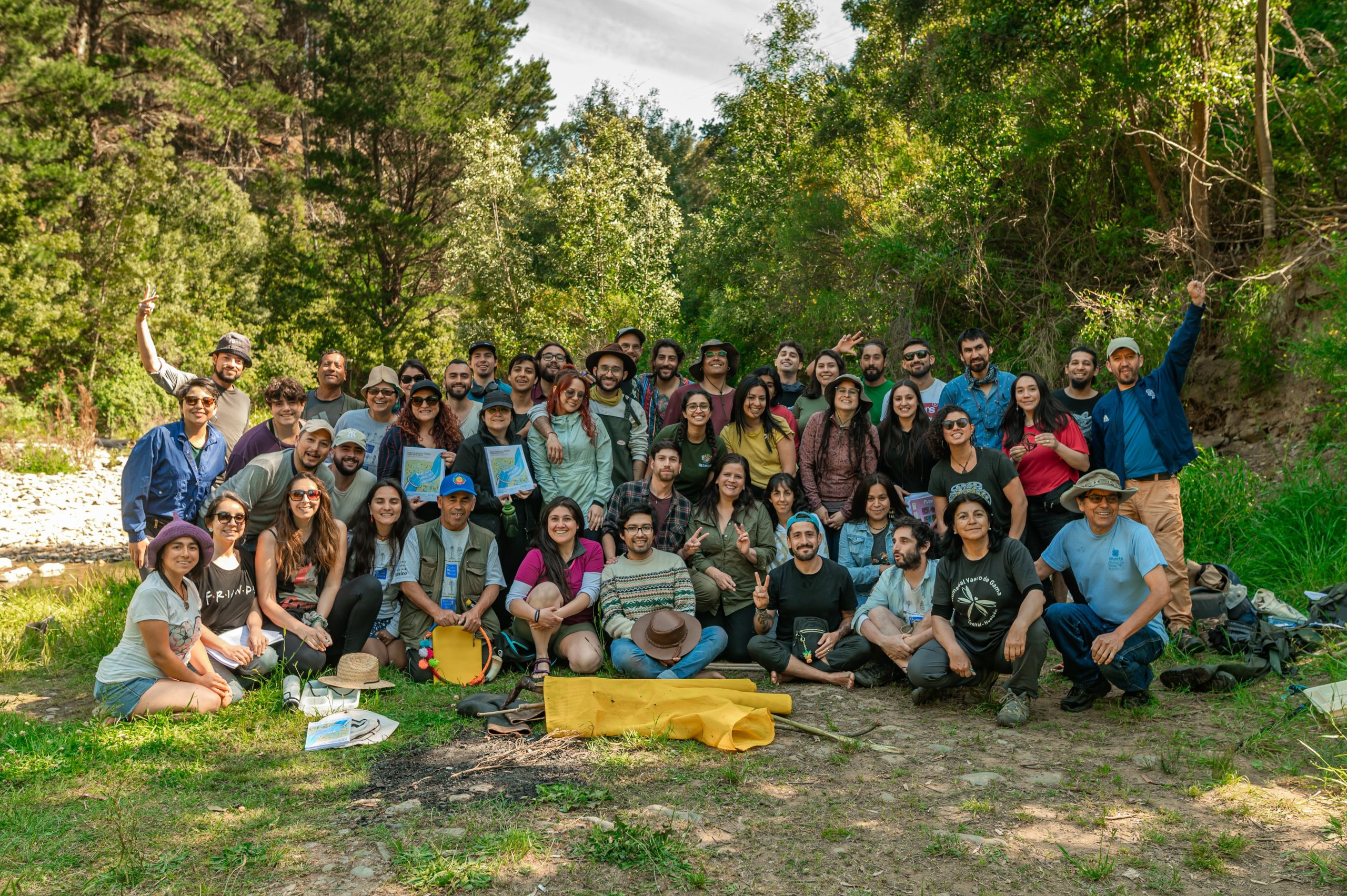
Sergio Ruiz-Cordova and Global Water Watch partners in Chile train 100 water monitors over the course of 2 years. Photo credit: Filipe Zanotti.
Global Water Watch is celebrating having 100 trained water monitors in Chile over two years. Learning about rivers, water, biodiversity, and natural resources changes people’s attitudes about why their actions matter locally, and what they can do to make a difference. Having data about water quality helps citizens advocate for the improvement of their drinking water quality and public health. Sergio Ruiz-Cordova, Associate Director of Global Water Watch, has been coordinating with colleagues across the globe for years in an effort to bring citizen science water monitoring to new areas. Learn more about their work below.
What is Global Water Watch?
Global Water Watch is a voluntary network of affiliated community-based water monitoring groups across the world. The goal of GWW, much like Alabama Water Watch, is to foster watershed stewardship through citizen volunteer monitoring of surface waters to improve water quality and public health.
Although GWW has representatives all over the globe, it is housed in part in the Auburn University Water Resources Center. You can find their newest blog posts here.
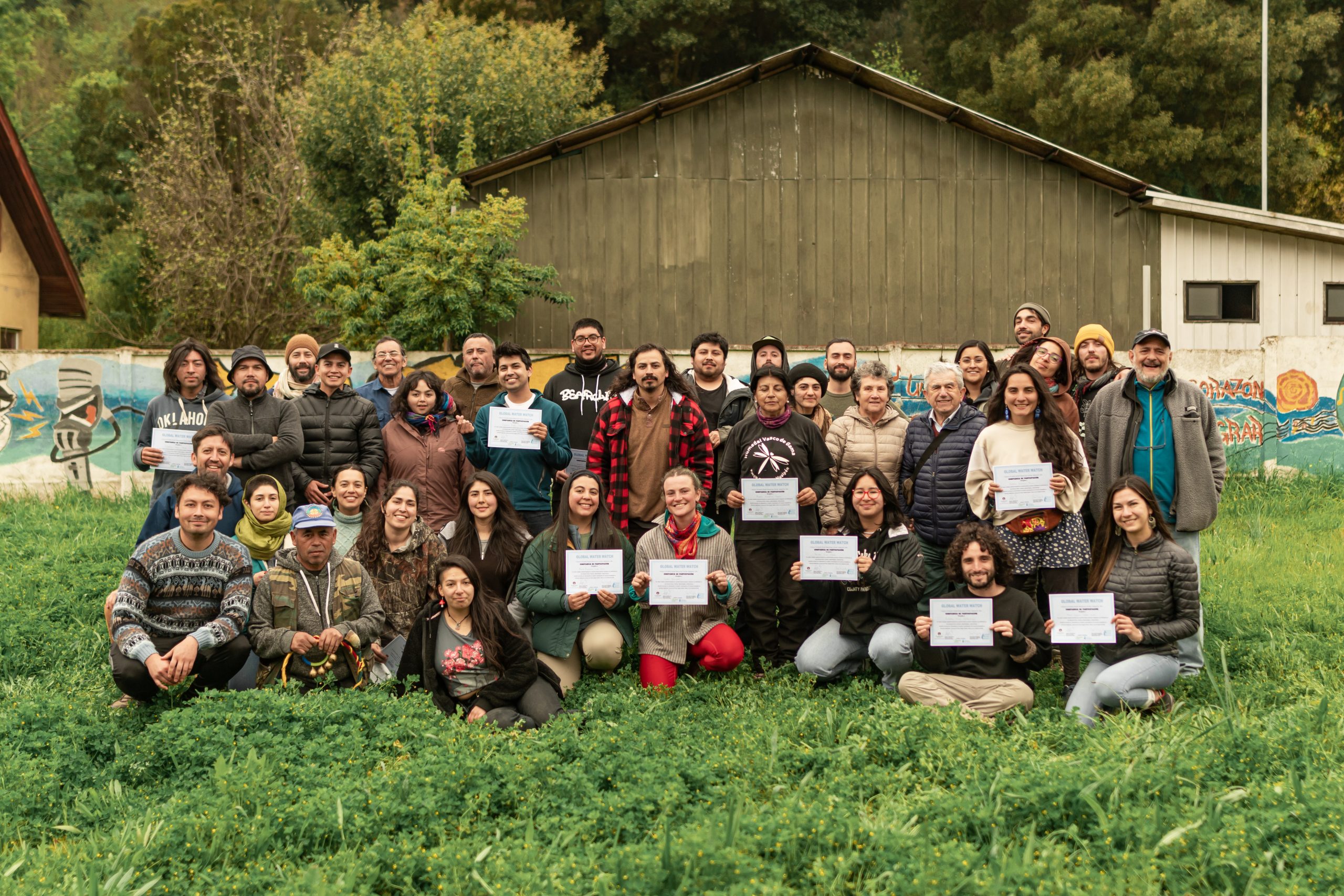
Chilean water monitors were trained in GWW’s first trip to Chile back in 2022. Photo credit: Filipe Zanotti
A Global Need for Citizen Science Water Monitors
People, particularly in the developing world, often do not have access to the quantity and quality of water they need. GWW trains residents of the watershed and assists them in obtaining monitoring supplies to take an active part in stream surveys and monitoring programs that will provide baseline water resource data.
Citizen groups can reach a greater number of sites, collect a greater number of samples, sample with greater frequency and responsibility and also find water quality trends once the data is integrated in an efficient database. Once collected, this information can be presented in a variety of forms that can be accessible by multiple interest groups, including teachers, policy-makers, the scientific community and the public in general.


Global Water Watch returned to Chile in 2023 to train monitors in three locations. Photo credit: Google Maps adapted by Laura Cooley
Global Water Watch Returns to Chile
In 2023, Sergio and his GWW partners were able to host several training sessions in Chile. These trainings resulted in recertification in bacteriological, water chemistry monitoring and biomonitoring for 20 monitors, as well as certification of 24 new monitors in Laja and 42 new monitors in Tomé. Sergio also participated in the first in-person meeting of a group called Red CAMCPA (Red Continental Americana de Monitoreo Comunitario Participativo Del Agua) in the city of Villarrica, Chile.
Working to Restore Rivers, Lakes, and Wetlands
The Red CAMCPA was formed in 2021 to unite conservation actors and organizations to conserve and restore the rivers, lakes, and wetlands of the American Continents through participatory community-based water monitoring and a collaborative exchange of experiences and knowledge. From North America to the tip of South America, the network seeks to influence the educational and public policy spheres, helping people make sound, science-based decisions and actions that may result in healthier ecosystems and the equitable and sustainable use of water resources. Representatives from US, Mexico, Guatemala, Costa Rica, Peru and Chile attended the meeting to learn in more detail about other groups citizen science initiatives, knowledge, and shared experiences to see how they could better collaborate and learn from one another.
Various water monitoring methodologies were also demonstrated in Lake Villarrica and in the Trancura River. Global Water Watch shared the environmental monitoring approach that is currently used by AWW, which has made of the program a national and international model to simulate regarding successful citizen science, citizen-based water monitoring and watershed stewardship. The Red CAMCPA is continuing to have regular virtual meetings and is looking into funding options to reinforce efforts of multiple partners and to organize a second in-person meeting in early 2025 in Costa Rica.
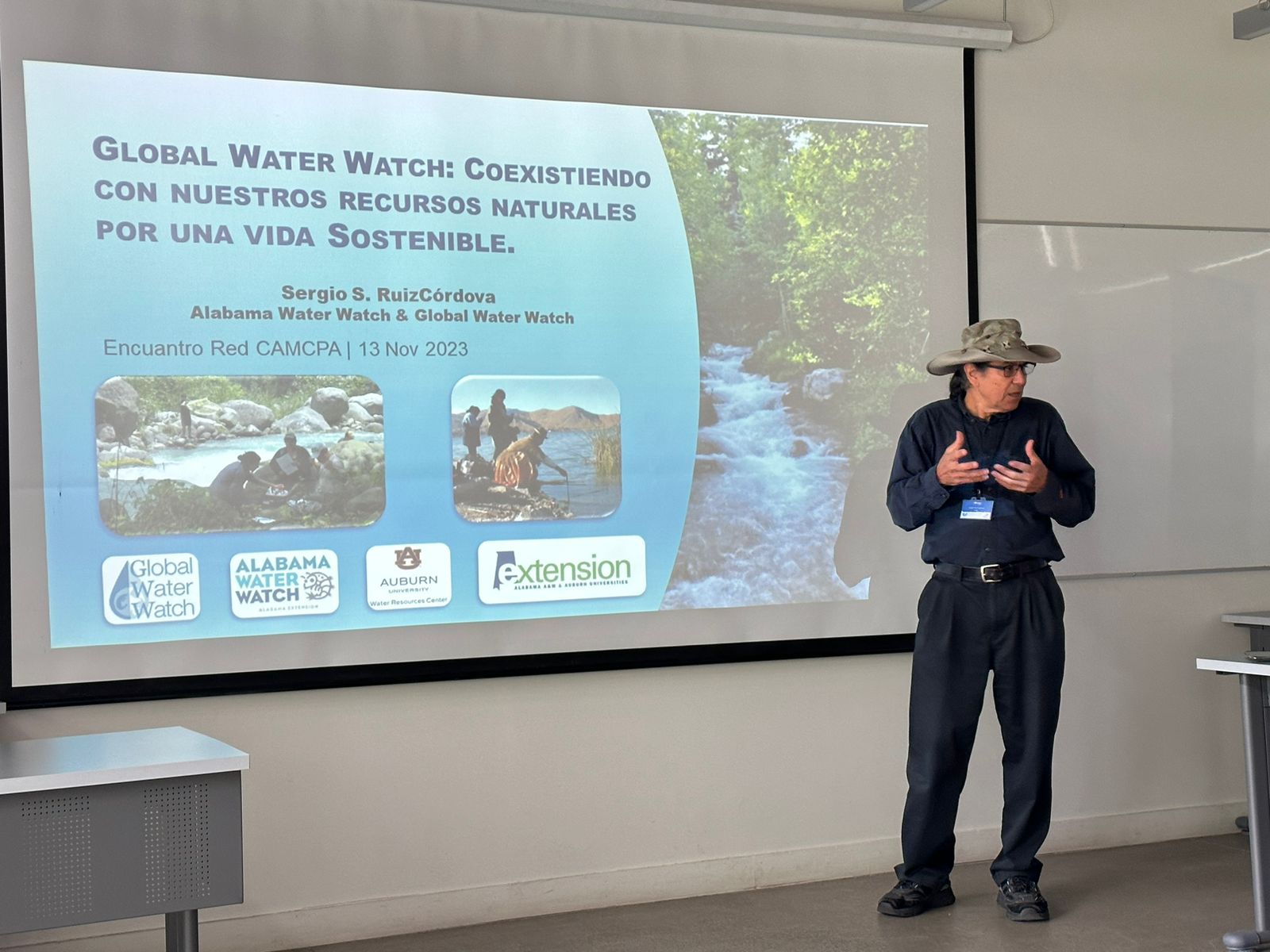
Sergio Ruiz-Cordova presents at Red CAMCPA meeting in 2023. Photo Credit: Photo credit: Filipe Zanotti.
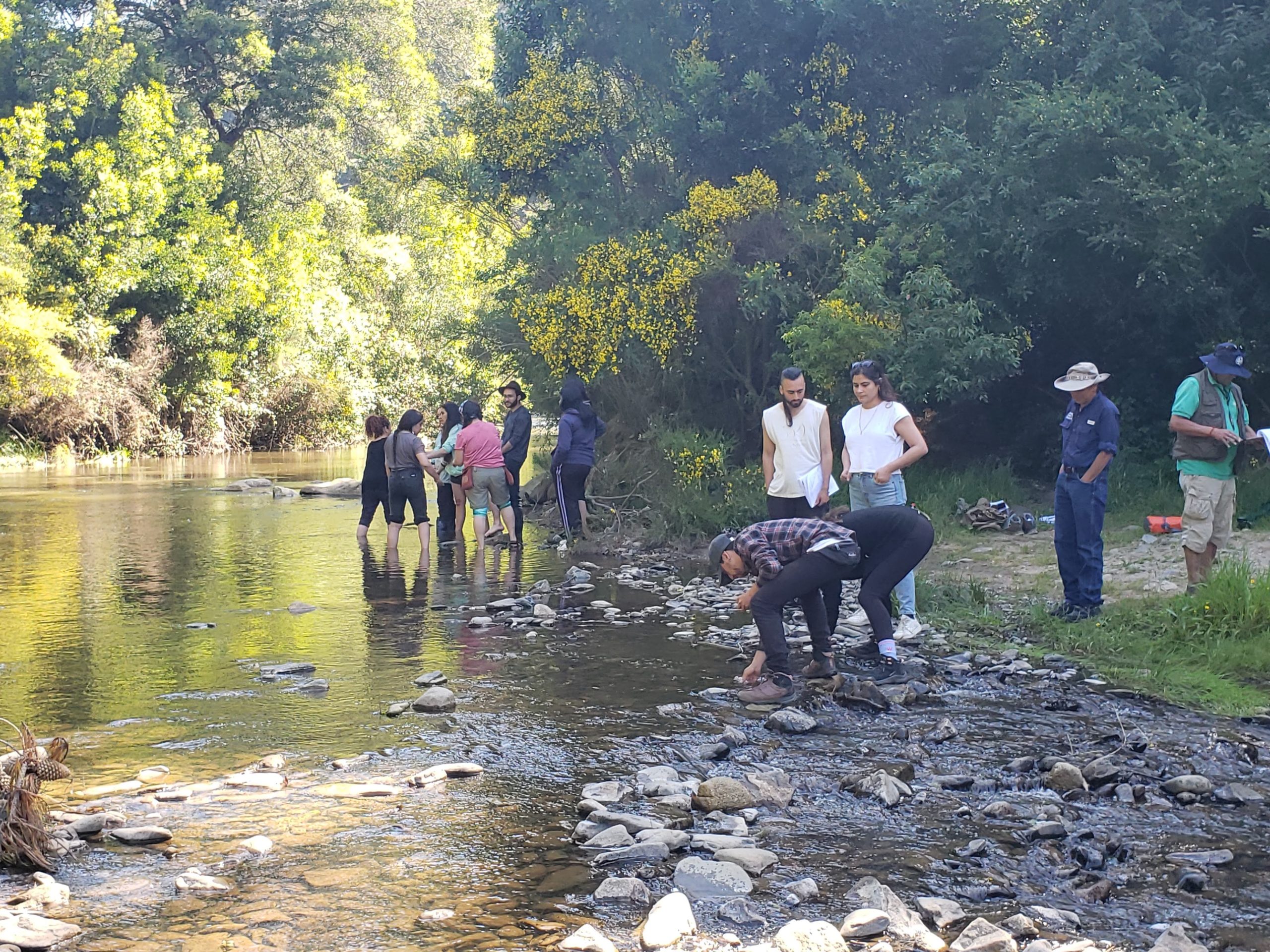
Students learn bacteriological and chemical water testing methods. Photo credit: Photo credit: Filipe Zanotti.
1. First Stop, Conceptión
Fundación Manzana Verde (FMV) is the organization partnering with GWW in Chile, and they are based in the city of Concepción in the Biobio Region, south of the capital Santiago. GWW has been working with FMV since 2022 when GWW 36 Chileans were certified at training sessions (pictured above) of the three most common water monitoring types promoted by GWW: bacteriological monitoring, physical-chemical monitoring, and biomonitoring using aquatic macroinvertebrates.
In 2023, Sergio and the GWW team conducted recertification training for 20 Chilean monitors in bacteria monitoring, water chemistry monitoring, and biomonitoring. Most Chilean monitors are very active, monitoring on a regular basis. Six of these monitors were also certified as the first Chilean GWW Trainers.
The new local GWW Trainers, with supervision of the GWW team, assisted conducting trainings of a second cohort of 66 Chilean monitors in the three types of GWW monitoring being conducted in the country.
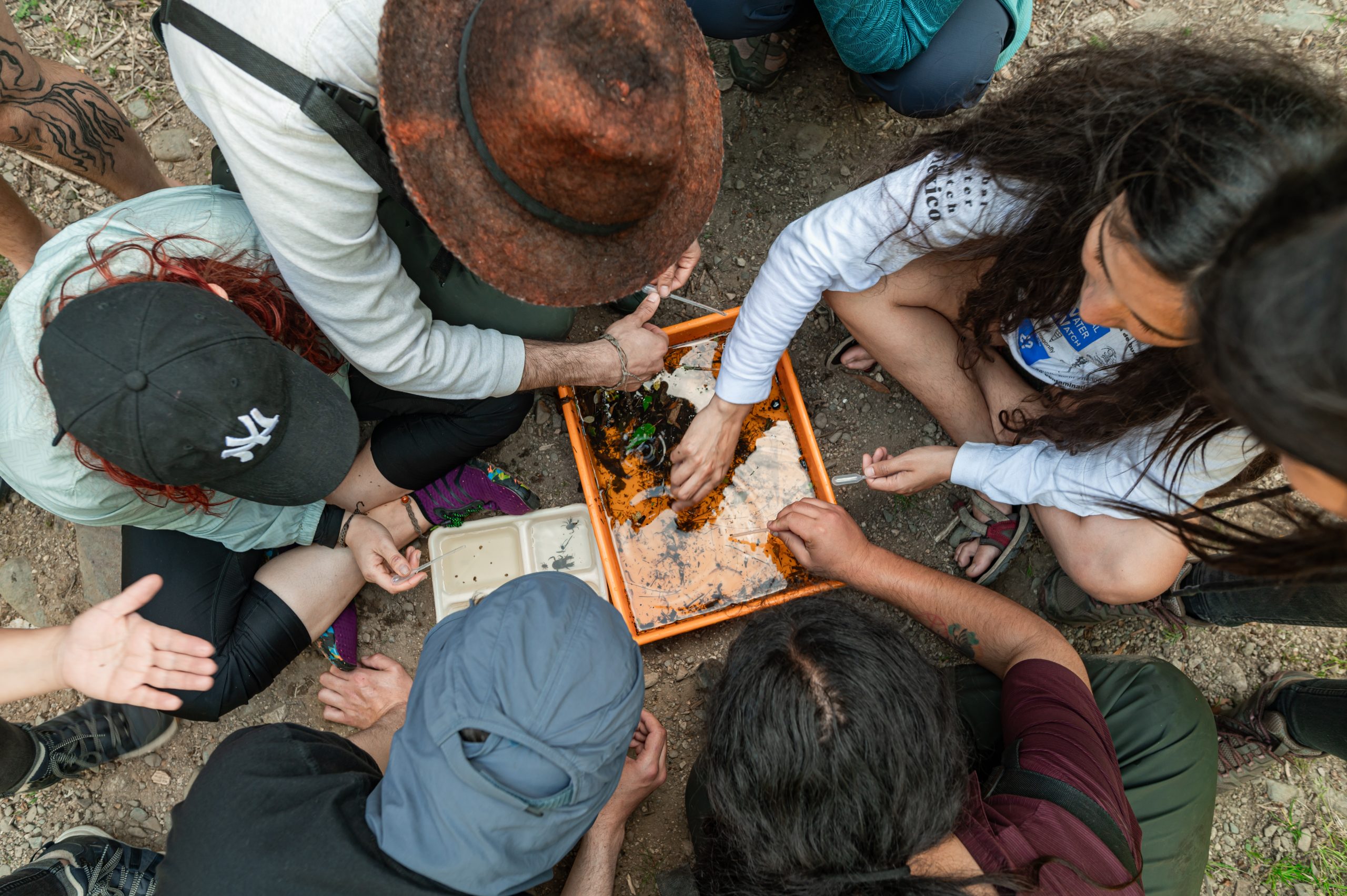
Students learn how microinvertebrates can be an indicator of water quality. Photo credit: Photo credit: Filipe Zanotti.
2. Laja
Global Water Watch hosted a 3-day workshop in the city of Laja, where 24 citizens (11 of which were high school students) were certified as new monitors in water chemistry monitoring, bacteriological monitoring, and biomonitoring. Water chemistry and bacteriological monitoring field work was conducted at La Señoraza Lagoon, the main tourist attraction of the area, while biomonitoring was practiced at a small stream flowing out of the lagoon.
3. Tome
In 2023 GWW returned to the location of the first water monitoring workshops in the Biobio region and with the first cohort of local trainers, certified 42 citizens as new GWW monitors in water chemistry monitoring, bacteriological monitoring, and biomonitoring training sessions in Tomé, with practice at the Estero Buenavista (See photos below).
Looking Ahead
After this visit to Chile, there are about 100 GWW monitors from over a dozen different communities in Chile. To follow the work of Global Water Watch, keep up with their blog, or contact Sergio Ruiz Cordova with the AU Water Resources Center to learn more.
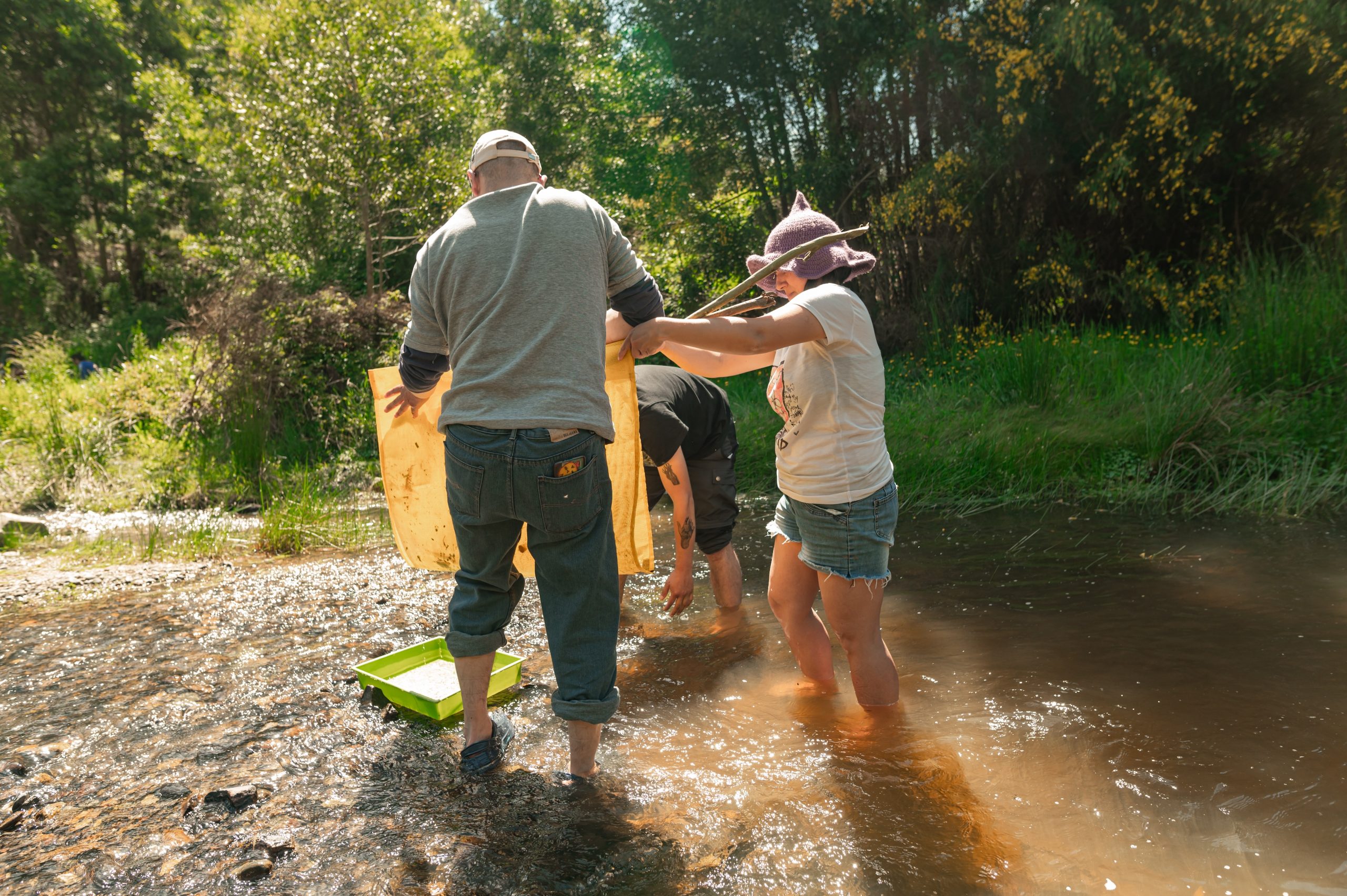
Students collect macroinvertebrates from stream to assess water quality by the type and quantity of macroinvertebrates present. Photo credit: Filipe Zanotti.

Sergio Ruiz-Cordova works with students to assess the types of macroinvertebrates present and what they can indicate about water quality. Photo credit: Filipe Zanotti.
